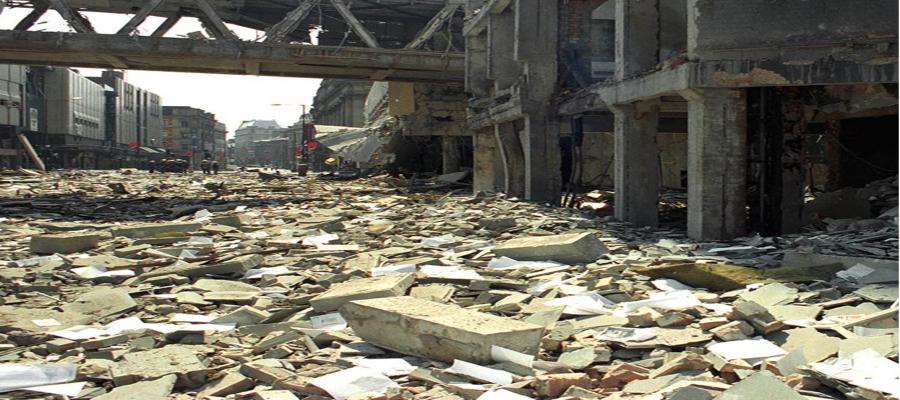Introduction
Explosives are used by terrorists to target people, buildings and other infrastructure and to generate fear and publicity. Mostly, terrorists will construct improvised weapons, known as Improvised Explosive Devices (IEDs). The design (size, type of explosives, use of fragmentation, means of initiation etc) and deployment (targeting, tactics etc) of IEDs will vary greatly between terrorist groups, their geographic location/operating environment and the effect they seek on an intended target.

Types of weapons and delivery methods
When developing any requirements for blast protection, it is important to decide which weapons and delivery method need to be addressed. These include for example:
- Person Borne Improvised Explosive Devices (PBIED)
- Vehicle Borne Improvised Explosive Devices (VBIED)
- Hand Delivered Improvised Explosive Devices (HDIED)
- Under Vehicle Improvised Explosive Devices (UVIED)
- Postal/mail delivered Improvised Explosive Devices
- Grenades (including improvised)
- Shaped charges
- Mortars and improvised mortars (both direct and indirect fire)
- Rockets
- Improvised Incendiary Devices (technically these are incendiary devices rather than blast weapons)
Guidance on the likelihood and tactical use of the above against a given target should be sought from your NPSA adviser (if you are a customer of NPSA) or your local police Counter Terrorism Security Adviser.
Measures to mitigate risk
When developing physical protection and/or mitigation from such weapons, it is important to maximise stand-off distance, as this is likely to produce the lowest cost solution and greatest risk reduction. Further measures that can be taken to reduce harm to individuals or damage to the assets, include:
- Use of search and screening to detect weapons
- Use of hostile vehicle mitigation to enforce stand-off from VBIEDs
- Designing facility/building entry points to minimise the impact of an attack
- Use of blast resistant glass to protect occupants from hazardous glass fragments
- Designing the structural frame against progressive collapse
- Use of blast resistant doors and walls, to protect the most important assets or protected spaces
- Design of mail screening facilities to minimise the impact of an attack
- Designing local infrastructure to be more resilient to attack
- Use of blast resistant litter bins
- Further information on each of these areas is available via the page links.
Where a facility/asset requires protection from a range of threats, including for example firearms, forced entry etc, then these multiple requirements should be determined from the outset, as it is common for these to cause conflicting protection needs.
It is recommended that if your site/facility requires blast protection, that you employ a security specialist with the relevant skills and experience - see the Register of Security Engineers and Specialists for more information.